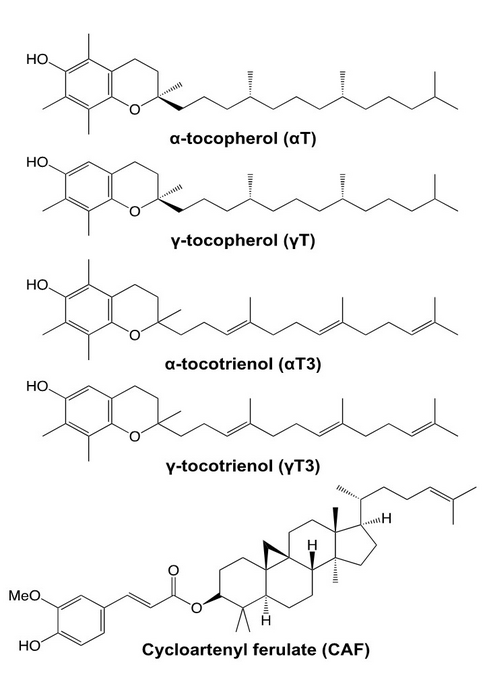Asian diets feature rice as a staple grain, contributing towards nearly 90% of the world’s rice consumption. Brown rice, in particular, is known to have several health benefits. As a regular addition to the diet, it can help reduce body weight, lower cholesterol, and suppress inflammation. The ability of brown rice to neutralize reactive oxygen species and prevent cellular damage is vital to many of its health-promoting effects. Although previous studies have shown that the antioxidant compounds in brown rice can protect cells against oxidative stress, knowledge regarding which major compound contributes towards these beneficial properties has long remained a mystery.

Credit: Yoshimasa Nakamura
Asian diets feature rice as a staple grain, contributing towards nearly 90% of the world’s rice consumption. Brown rice, in particular, is known to have several health benefits. As a regular addition to the diet, it can help reduce body weight, lower cholesterol, and suppress inflammation. The ability of brown rice to neutralize reactive oxygen species and prevent cellular damage is vital to many of its health-promoting effects. Although previous studies have shown that the antioxidant compounds in brown rice can protect cells against oxidative stress, knowledge regarding which major compound contributes towards these beneficial properties has long remained a mystery.
In a recent study led by Professor Yoshimasa Nakamura from the Graduate School of Environmental and Life Science, Okayama University, researchers from Japan have identified cycloartenyl ferulate (CAF) as the main “cytoprotective” or cell-protecting compound in brown rice. CAF is a unique compound owing to its hybrid structure. As Professor Nakamura explains, “CAF is a hybrid compound of polyphenol and phytosterol and is expected to be a potent bioactive substance with various pharmacological properties, such as antioxidant effect and blood fat-lowering effect.”
The study published on January 3, 2023 in volume 24 issue 1 of International Journal of Molecular Sciences, was co-authored by Hongyan Wu, from Dalian Polytechnic University, and Toshiyuki Nakamura, from the Graduate School of Environmental and Life Science at Okayama University. In it, the researchers provide evidence of CAF’s antioxidant properties by demonstrating that it can protect cells from stress caused by hydrogen peroxide. Although hydrogen peroxide is a by-product of a cell’s metabolic processes, abnormal amounts of the compound can be toxic to cells and cause irreversible damage. Treatment of cells with CAF increased their resistance to toxic stress induced by hydrogen peroxide. Moreover, CAF provided greater protection from hydrogen peroxide-induced stress compared to alpha-tocopherol and gamma-tocopherol, two other prominent antioxidant compounds that were earlier speculated to be major contributors to the antioxidant capacity of brown rice.
According to the study’s estimates, the amount of CAF in the whole grain of brown rice is five-fold higher than that of other antioxidant compounds found in brown rice. Further, CAF increases the concentration of heme oxygenase-1 or HO-1, an enzyme that facilitates the production of antioxidants. “We demonstrated here that CAF significantly increased the mRNA level of HO-1, the small molecular weight antioxidant-producing enzyme, at concentrations similar to that required for cytoprotective effects in resistance to oxidative damage,” Professor Nakamura explains.
The researchers further explored this mechanism of action through experiments where blocking HO-1 activity using inhibitors reduced the antioxidant effect of CAF considerably. The high abundance and unique mechanism of action are evidence that CAF is the major contributing antioxidant in brown rice.
Through this study, the researchers have not only uncovered the secret to the health benefits of brown rice, but also locked down on the component that is majorly responsible for these benefits. This will allow the use of CAF in the development of better novel supplements and food products focused on consumer health. As an optimistic Professor Nakamura observes, “Our study can help in the development of new functional foods and supplements based on the functionality of CAFs, like CAF-based nutraceuticals.”
Although, with such naturally occurring health benefits, brown rice still very much looks to be on the menu!
About Okayama University, Japan
As one of the leading universities in Japan, Okayama University aims to create and establish a new paradigm for the sustainable development of the world. Okayama University offers a wide range of academic fields, which become the basis of the integrated graduate schools. This not only allows us to conduct the most advanced and up-to-date research, but also provides an enriching educational experience.
Website: https://www.okayama-u.ac.jp/index_e.html
About Professor Yoshimasa Nakamura from Okayama University, Japan
Dr Yoshimasa Nakamura is a professor at the Graduate School of Environmental and Life Science at Okayama University. He has nearly 30 years of research experience and has published over 317 scientific articles. His fields of academic interest include Phytochemicals, Reactive Oxygen Species and Antioxidants, Lipid Peroxidation, Apoptosis, Cell Apoptosis and GSH. Professor Nakamura has previously worked at Kyoto University, Nagoya University, and University of Illinois at Chicago.
Journal
International Journal of Molecular Sciences
DOI
10.3390/ijms24010822
Method of Research
Experimental study
Subject of Research
Cells
Article Title
Cycloartenyl ferulate is the predominant compound in brown rice conferring cytoprotective potential against oxidative stress-induced cytotoxicity
Article Publication Date
3-Jan-2023
COI Statement
The authors declare no conflict of interest




